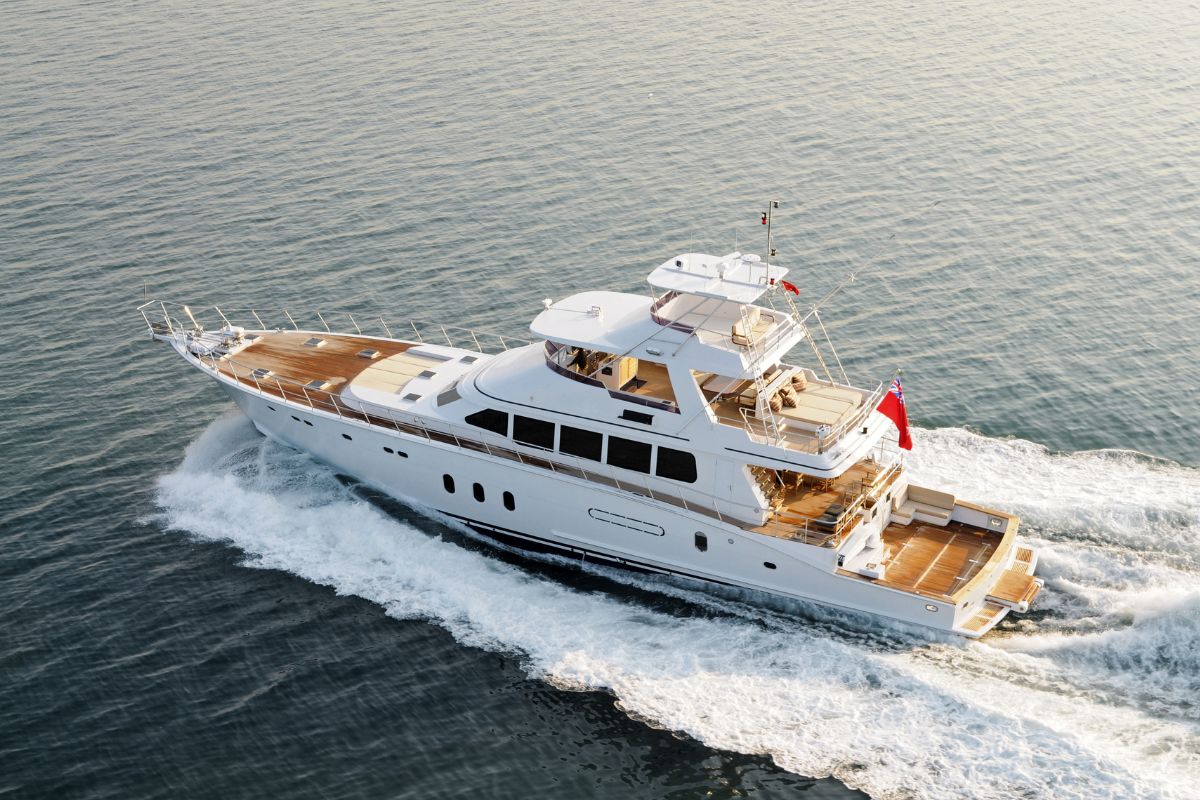Boat speed is a critical component that influences both the usefulness and enjoyment of cruising or racing. Whether you’re racing or just cruising, understanding how your yacht speed is affected may make your sailing safer and more pleasurable. Speed does not only affect how soon you will reach your destination but also influences how the vessel behaves in different sea states impacting on overall handling and safety.
Explore our comprehensive Reintjes Dubai Gearboxes Services by visiting the website.
Types of Yachts
Motor Yachts
Those who want to reach where they are going in the quickest time and with the least amount of disturbance frequently choose motor boats as they are renowned for their speed and power. The velocity of a motor yacht mostly depends on just two factors that include engine horsepower and hull design. The horsepower rating of an engine helps determine how quickly it can propel a boat through water. Another factor that contributes to its speed capacity is the type of hull it has; whether it’s displacement, semi-displacement, or planing. Displacement hulls usually move slower, but provide smoother rides particularly in rough seas while planing hulls can reach higher speeds by gliding over the surface of the water. Semi-displacement hulls offer intermediate speed as well as stability. On top of this, materials used in building the yacht play an important role in determining its overall weight and also efficiency of its propulsion system all affecting its speed capability.
Sailing Yachts
Conversely, sailing boats employ wind to propel them forward, which results in many effects on their speed. With each having individual speed potential, monohulls and catamarans are the two basic types of sailing boats. Monohulls have one hull and typically give a more conventional sailing experience and are usually slower than those with multiple hulls. Catamarans which have two parallel hulls tend to be faster because they are lighter and have less water resistance. Nevertheless, depending on whether the yacht is propelled by wind only or has an engine, it can move at varying speeds. Motoring for instance can increase the rate of movement but it is not so efficient and may spoil the pureness of the sailing spirit. Sail design, rigging as well as crew competence also determine how fast a sailboat can go in various wind/sea conditions.
Key Factors Affecting Yacht Speed
Environmental Conditions
A yacht’s speed is heavily impacted by its surroundings. The main factor propelling sailing ships is wind; the direction and speed of wind are thus rather important. The boat will go quicker the stronger and more favorably oriented the wind. Furthermore influencing yacht speed are waves and swell as harsher sea conditions may slow down the ship and complicate navigation. Furthermore depending on their orientation relative to the yacht’s track, tides and currents may either help or impede a yacht’s forward motion.
Boat Design and Construction
The design and construction of a yacht are fundamental to its speed capabilities. The hull shape is particularly important; displacement hulls are slower but provide a smoother ride, while planing hulls can achieve higher speeds by skimming over the water’s surface. Weight is another critical factor—lighter yachts generally move faster and are more maneuverable, while heavier yachts may struggle to reach high speeds. For sailing yachts, rigging and sail area are crucial, as larger sails can capture more wind, thus increasing speed.
Engine Specifications (for Motor Yachts)
For motor yachts, the engine’s power and specifications are key to achieving optimal speed. The relationship between engine power and yacht speed is direct; more powerful engines can propel the yacht faster. Additionally, the propeller design is vital, as it determines how efficiently the engine’s power is converted into forward motion. Propellers that are well-matched to the engine and hull design will optimize speed and performance.
Operational Factors
The skill and expertise of the crew play a pivotal role in determining a yacht’s speed and overall maneuverability. Experienced crew members, whether in sailing or motoring, possess the ability to make swift and informed decisions that not only enhance speed but also ensure the safety of everyone on board. In competitive racing, the importance of teamwork and communication cannot be overstated. Effective coordination among the crew is essential for making real-time adjustments to sails, rigging, and other critical settings, all of which contribute to maximizing the yacht’s speed.
Achieving optimal speed also depends on meticulous attention to rig settings, sail trim, and weight distribution. These factors must be carefully managed to adapt to changing conditions, such as shifts in wind direction or variations in sea state. Regular, precise adjustments based on these environmental factors can have a profound impact on the yacht’s performance. For instance, a well-trimmed sail catches more wind, propelling the yacht faster, while balanced weight distribution ensures that the yacht remains stable and agile. Mastering the art of fine-tuning these elements is crucial for anyone looking to optimize their yacht’s speed and overall performance in any situation.
Maintenance and Equipment
Maintaining a yacht in optimal condition is essential to preserving its speed capabilities. One of the most critical aspects of this is hull cleanliness. A clean hull is free from marine growth, such as barnacles and algae, which can create drag and significantly slow down the yacht. By reducing this drag, a clean hull allows the yacht to glide more smoothly and efficiently through the water, enhancing overall speed. In addition to hull maintenance, regular upkeep of sails, rigging, and engine performance is crucial. Sails must be in good condition to capture the wind effectively, and rigging needs to be correctly adjusted to maximize aerodynamics. The engine, whether used primarily or as a backup, must be regularly serviced to ensure it operates at peak performance, further contributing to the yacht’s speed and reliability.
Advancements in modern materials and technologies have also played a significant role in boosting yacht speed. Innovations in sail design and hull construction have led to the development of lighter, stronger, and more aerodynamic yachts. These modern vessels are capable of achieving greater speeds with improved efficiency, making them highly competitive in racing scenarios and more enjoyable for leisure sailing. These technological improvements have revolutionized the sailing experience, offering both performance enhancements and greater enjoyment on the water.
Safety Considerations
While achieving high speeds on a yacht can be exhilarating, it is crucial to maintain a careful balance between speed and safety. Pushing a yacht to its maximum speed can significantly heighten the risk of accidents, especially when navigating in challenging conditions such as poor visibility, rough weather, or congested waterways. In these scenarios, the potential for collisions or mishaps increases, making it vital to prioritize safety over speed. Understanding and adhering to the safe speed limits of your yacht, tailored to various conditions, is key to protecting both the crew and the vessel. It’s important to remember that each yacht has its own safe operating parameters, and respecting these limits ensures a secure and enjoyable experience on the water, no matter the circumstances.
Conclusion
In conclusion, yacht speed is influenced by a variety of factors, including environmental conditions, boat design, crew skill, and maintenance. Understanding these factors is crucial for anyone looking to optimize their yacht’s performance, whether for racing or recreational purposes. By considering all these elements, sailors can achieve a balance between speed and safety, ensuring a rewarding and enjoyable experience on the water.












